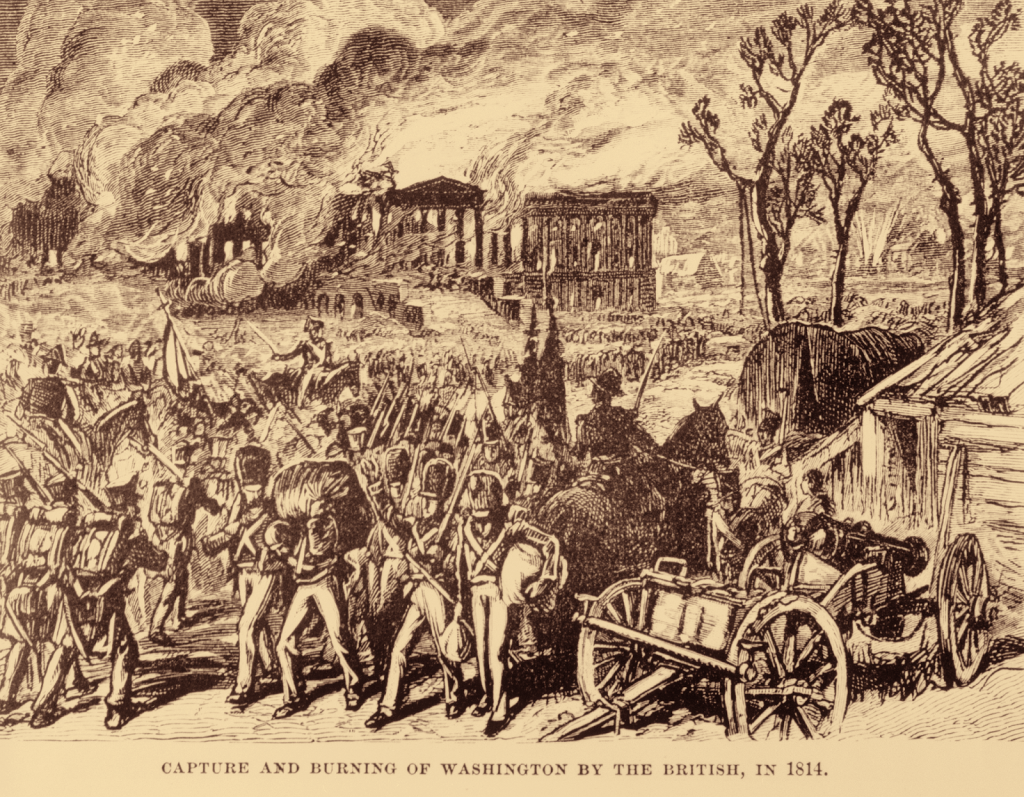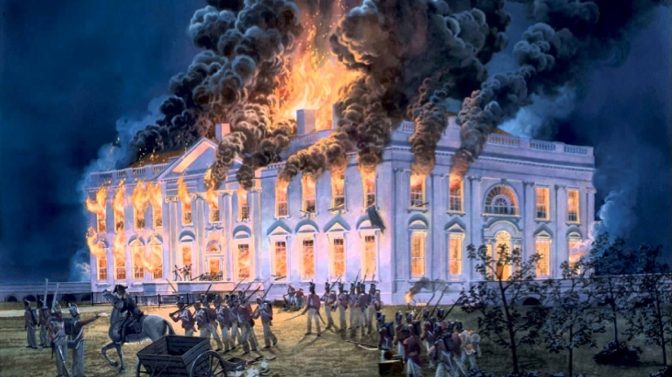The War of 1812 began on June 18, 1812 when President James Madison declared war on Britain. Over twenty years before, Washington, D.C. was founded and established as the nation’s new capital in 1790. Two years after the war began in August of 1814, British troops burned the city that was home to about 8,000 citizens and the president himself.
On August 24, 1814 the British defeated the Americans in the Battle of Bladensburg. The town, located in Maryland, is about 8.6 miles from Washington, D.C. Because of the American defeat, the British troops marched into the capital. James Madison and many military and government members fled the city right after the news that the British had won the battle. The group stayed the night in the small town of Brookeville in Maryland.
The U.S. Capitol building was one of the primary targets in the burning. However, the British were having trouble setting the building on fire after they had gone through and looted it. So, they came up with the idea to pile up furniture and set it aflame with rocket powder. This worked and the building burned down, the 3,000 items in the Library of Congress lost with it. The building surrounding the Capitol also caught on fire and burned down with it.
Next, the British troops made their way up to the White House. Dolley Madison had received a letter telling her to get out of the city from her husband shortly before the British reached the White House. Luckily, she got out safely and the White house staff and slaves were able to retrieve the valuables. The White House caught on fire that night with fuels added so the building would not stop burning.
Rear Admiral Cockburn had intended next to burn down the building where the National Intelligencer, a newspaper in D.C., operated. Nervous that setting the building ablaze would burn down their homes, many women were able to change his mind. Instead of burning it, the building was torn apart. The main reason as to why he wanted the building gone so badly was because of their negative views on him.
Hoping they would find money and valuables, the British went for the United States Treasury building. They, however, did not find either. Along with other public buildings in the area, the United States Treasury was burned down. Following the Treasury building, the United States Department of War building was sought out. Before the British had entered the city, all records were taken out so they would not be burned with the building.
The historic Washington Navy Yard was also sought out by the British troops, but the Americans had already burned it down. About 150 gunpowder barrels were found at a fort located on Greenleaf’s Point. The Americans had tried to rid the fort of anything of use for the British, but they had not emptied it entirely. While attempting to throw the barrels down a well, the barrels exploded and killed thirty men and seriously injured many others.
Not even twenty-four hours after the British had began the attacks on D.C., a severe storm hit the city. It started off as thunderstorm that put off the fires, then turned into a tornado. The tornado took two cannons then dropped them off which led to many British soldiers killed. Some citizens of the city were also killed by the canons. The British, upon the arrival of the storm, rushed back to their ships. Many of their ships had been damaged during the storm though. After twenty-six hours of occupying and burning the city, the British troops fled Washington, D.C.
Construction began to rebuild the capital in 1815 and lasted until 1819. The causalities of the attacks on the city were low, with only one British soldier killed. Six were wounded, but no Americans were killed by the British.



